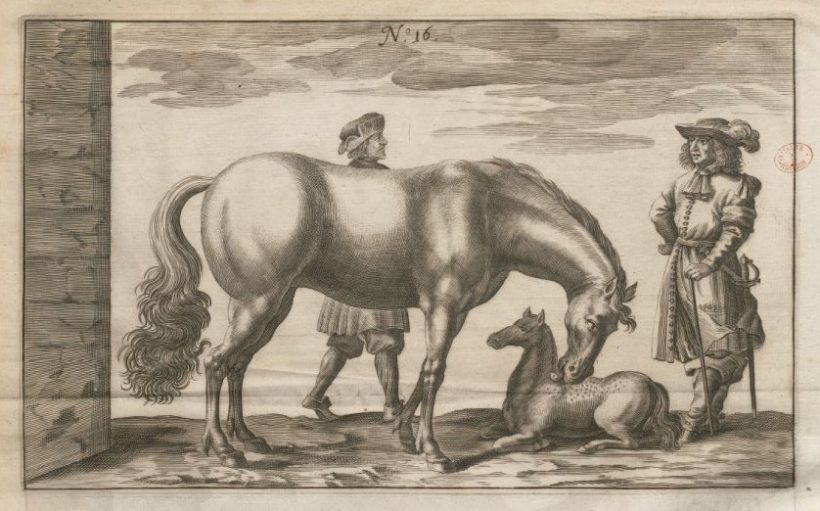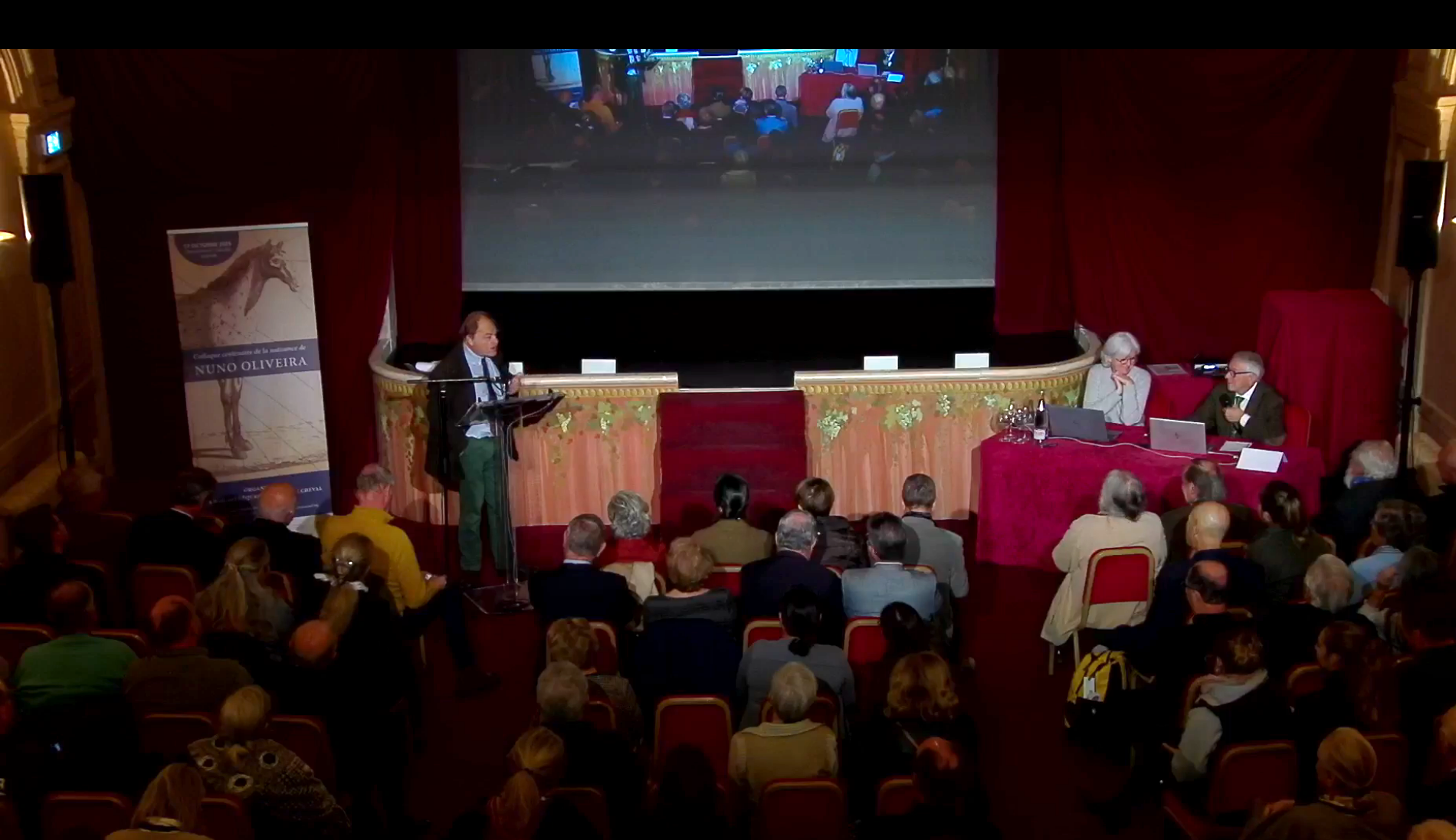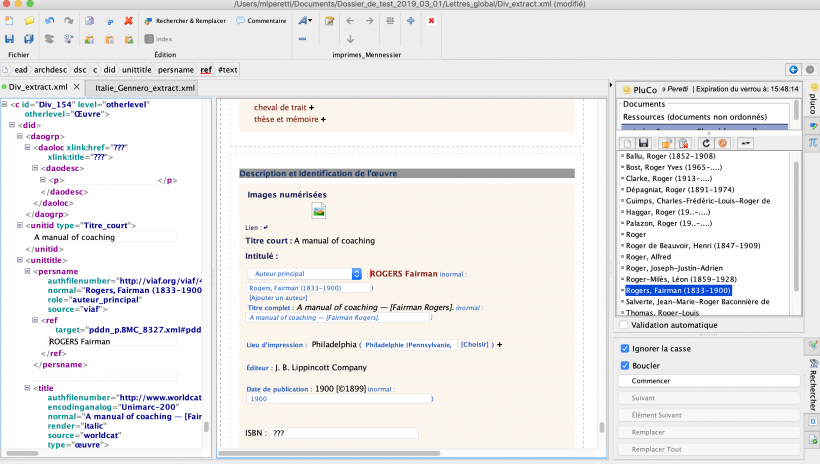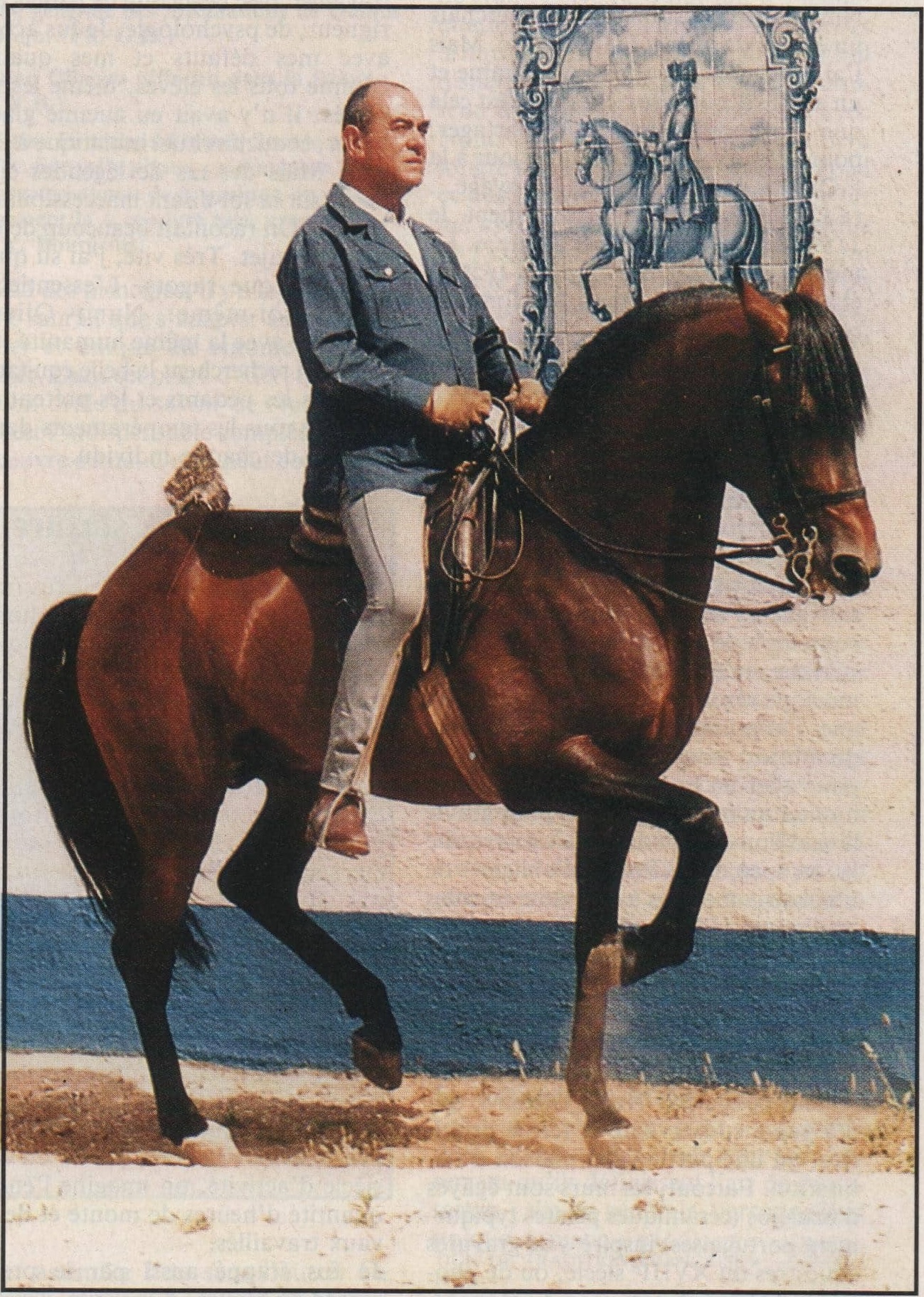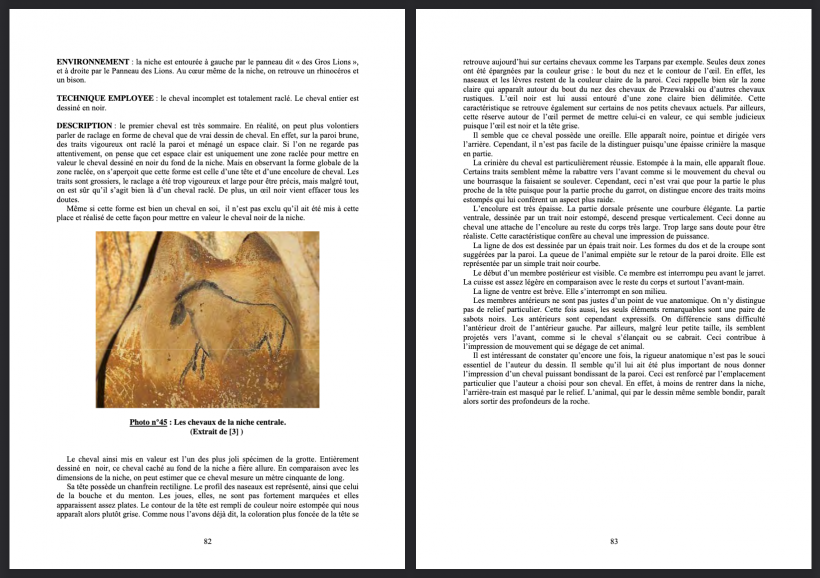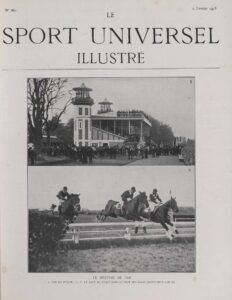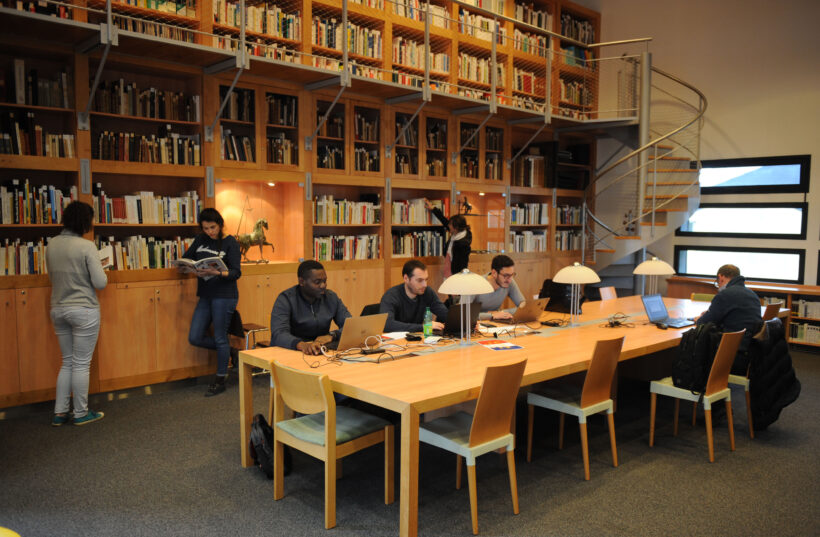
“Saumur” key to a mutual collection?
Saumur, Capital of the Horse ? Capital of horse riding and the equestrian arts ? Capital of knowledge, at least in France, on the subject of horses? Saumur as the one and only showcase for this knowledge, where researchers and enthusiasts can tap into the source of books and collections that have been compiled, indexed and referenced? Why not?
The idea crossed our minds at a recent meeting of the Culture, Heritage and UNESCO Committee organised by the Institut français du cheval et de l'équitation (IFCE), which is working, among other things, to promote traditional French horse-riding (Saumur) so that it can be included on UNESCO's list of intangible heritage.
It's a quest, a requirement, let's face it!
Saumur has a wealth of books, documents and correspondence from private collections and donations from the families of riders, equestrians and other personalities from the world of the horse who left their mark on their respective eras.
The public collections are spread over three sites. The first, and most important, is the IFCE, followed by the museums of Saumur: the Château de Saumur museum and the École de cavalerie (EC), formerly the École d'application de l'arme blindée cavalerie (EAABC).
A first approach is to try to situate them in time and then follow their development. According to Honorine Tellier, who is in charge of the IFCE library, which includes the main collection referenced in Saumur and, by extension, those of the Haras du Pin and the Haras d'Uzès, the first collection comes from the former library of the Cadre Noir riders, which was housed at the École de cavalerie, which changed after the Second World War from horses to armoured vehicles. This takes us back to the beginnings of this cavalry school, in 1771 in Saumur, and then, after a hiatus from 1788 to 1814, to the present day. In other words, a large number of the books and documents that once lined the shelves of the three display cabinets in the office opposite that of the chief equerry of the Cadre Noir, which was then located at the École de cavalerie on the esplanade du Chardonnet, on the banks of the Loire, are now at Terrefort. “It was selected by Colonel de Saint-André when he was Chief Squire (1964-1972). It corresponded to a request included in the decree creating the ENE in 1972. It started out in an ordinary room before being given a specially designed space at the end of the 1990s”, explains Honorine Tellier. Madame Bouchet, wife of the chief equerry, Lt-Colonel Alain Bouchet (1974-1975), who died tragically in a road accident on 15 July 1975, was succeeded by Patrice Franchet d'Espèrey, assisted successively by Katia Boutin and Brigitte Dupont, who took over for twenty-three years (from 1989 to July 2013).
Patrice Franchet d'Espèrey, a quarter of a century of shared passion.
L'Écuyer, a disciple of René Bacharah, a Bauchériste if ever there was one, today the author of landmark works such as La Main du maître, a reflection on the equestrian heritage, could also write a book on what is best understood as the ongoing evolution of the library, which depended on the interest of successive directors of the ENE in heritage and the dissemination of knowledge, among many other types of situations and projects to be managed, namely : Jean-Luc Lhemanne (1989-1994), Christian Cambo (1994-1999), Hubert Comis (2000-2005), Jacques Thiolat (2005-2008) and Robert d'Artois, who was Patrice Franchet d'Espèrey's last “boss”. It's fair to say that the “job” was tailor-made for the Écuyer, who was able to combine his (equestrian) art with a passion for his influence: “Initially, at the request of the Écuyer en chef, Christian Carde, who had asked Jean Luc Lehmanne to do it, it was part-time. I split my time between working on cull horses at the Haute-École and developing the classification based on the French Equestrian Sports Federation's equitation manual, which had been devised by Major Henry Blacque-Belair (1909-1913).. It was a difficult filing plan, albeit with a certain logic, but I had to work very hard to adapt it”. Then Madame Bouchet's work began again. “For each book, we issued three cards, depending on whether it belonged to the Cavalry Museum, the Château Museum or the ENE. Then we started working on the records for the books we had in shop, to which we added the periodicals whose collections we completed - with the exception of Sport Universel Illustré, I believe. To this we added donations, army purchases at public auctions such as that of General L'Hotte, correspondence, various documents, even video cassettes... Initially I worked with Katia Boutin, who left us when Hubert Comis recruited her as an assistant. Brigitte Dupont, who took over, was extremely meticulous. She didn't leave anything behind. She quickly became autonomous, which allowed me to take on other collateral activities, such as organizing a dozen conferences. I would write up the reading notes in the morning and she would enter them into the database. When I left, 24,000 items had been indexed and we had been installed for some time in the new library site, located in the administration building built under the direction of Hubert Comis, with whom I probably worked best in the early 2000s. We were treated to a real library, with wooden shelving, a gallery and stepladders. It was also under his direction that we made some serious purchases. I remember: 24,000 euros for works belonging to General L'Hotte at the public sale of his library in Nancy, 5,500 euros for Baucher's correspondence...”.
Then came the time to digitize all these documents!
Computerization, digitization... The IFCE is still on it.
Behind Honorine Tellier's synthetic - or perhaps sibylline - phrase “the computerization of the collection was another major project” lies a real adventure that La Bibliothèque Mondiale du Cheval had already mentioned in an earlier interview with Patrice Franchet d'Espérey (March 2019): “A new stage in 2010: a student from the university centre came to the library to ask me how to consult the catalogue on the Internet, which wasn't possible at the time. The student's name was François-Xavier Bigo. He offered to create a website as part of an internship he was doing for his professional degree in “horse riding management and marketing”. The site was created without any funding and cost only the amount of a legal fee. Who could do better at the IFCE?
The site was quickly enriched with museum objects from the Mona Lisa database, etc., etc. Then came a two-stage digitization campaign, based on the four collections already mentioned. In 2011, Archives du Nord was able to make a selection of 120 old books, thanks to a grant from the Ministry of Culture, which was channeled through Saumur town hall, as only the Château-musée de Saumur was eligible.
The following year saw a partnership with the Bibliothèque Nationale de France for documents dating from 1810 to 1935. A total of 199,577 pages were digitized, corresponding to 66 documents from the National Stud, 361 from the National Riding School, 586 from the Cavalry School and 130 from the Château-musée, making a total of 1,143 documents, including the Journal des Haras and Sport universel illustré. At the same time, François-Xavier Bigo, who was working with a team of trainees to draw up the status sheets, created a portal of digitized books where 1,714 documents could be consulted”.
We're obviously well beyond that! And it's clear that in this respect the IFCE is a few steps ahead of the collections it manages compared with those of the Cavalry School and Château Museums, to which it has lent a helping hand.
What happened to the École de Cavalerie collection?
The École de Cavalerie seems to be the least concerned by the collection that remains, and that it undoubtedly deserves. According to some experts who have had access to it, it contains some fine items. So why this apparent lack of interest? According to Pierre Henri Delorge, who as curator of the Saumur military museums (EMS / CFA / MUSEUMS) is in charge of the collection, “We no longer have the resources to manage this collection”. Why? “Because of a lack of dedicated funding”. At a time of budget cuts, librarians are the first to be taken off the crew list! The last person to do so (whose name we were unable to obtain, or indeed the answers to our questionnaire, which we were told had been transferred to the Ministry of the Armed Forces, editor's note), has had no successor. And, according to our information, the interest shown by General Emmanuel Charpy, who has been appointed to head the Cavalry School for a three-year term on 1 August 2021, has not changed anything for the time being! Pierre Henri Delorge is unpacked in front of boxes of books that are not! “They're piled up in corridors. It saddens me all the more because I think we have, if not treasures, then works that are useful for knowledge. I try to respond as best I can to occasional requests, but that takes time and organization”. As you can see, there's no question of computerizing or digitizing the collection in this case... To do that, we'll have to go back to the IFCE.
The same goes for the Château's holdings, for which Nathalie Halgand's response has the merit of being precise: “The inventory of the collection? Yes, it's been done”. How is it organized? “It's a typed file transferred to Excel. The books are classified and numbered according to their size”. How is it accessed? “Mainly physically”. However: “Accessibility is still a problem, as the library is on the 2nd floor of the Château, and there is no lift and a spiral staircase”.
Online? Are we coming back to that? “In 2011, the ENE documentation centre began the process of digitizing the library's holdings. A large number of works were sent to BnF for this purpose, and 173 have been digitized and can be accessed on Gallica”. And since then? Does the Château still have ambitions for the collection and library that its team, led by Estelle Géraud, administers and “manages in the same way as the Château-Musée collections”?
It certainly does. And it has drawn up a list of tasks to be completed: “Review the classification with more precise cataloguing: firstly, integrate modern, recent journals, then resume digitization or, if the work has already been digitized because it is held in another library, specify that a copy is also held in Saumur. This would improve the visibility of our collection. Finally, consider digitizing the iconographic collection”. The same concern applies to ENE. “Continue to digitize works in the public domain and to promote the collection. Redo the filing plan and physically rearrange the documents. Classify and index the iconographic collection. Continue to improve storage conditions for the oldest and most fragile documents”.
The Musée du Château de Saumur and an enviably rich Iconographic collection.
Overall, the Château owns and manages a renowned collection of almost 6,000 items listed under the “Musée de France” label, ranging from the decorative arts to the fine arts, ethnology, archaeology and natural science, with a particular emphasis on ceramics (one of the finest collections of earthenware in France) and tapestries (from the 15th to the 18th century, most of which are listed as “Monuments historiques”). Horses and their harnessing are represented in the Musée de Saumur by old exhibits, but above all by engravings and works ranging from veterinary art to racing, and including every facet of the subject. This has been the case since the museum was founded in 1912 (in a few figures, 1,260 works and 3,000 items of graphic art, prints, engravings, etc.). Nathalie Halgand, who works alongside Estelle Géraud, curator of the Château Museum, recalls “the work of the successive curators of the Musée du Cheval when it was an association. The vets at the École de cavalerie also contributed to the collection by donating some of their works, as did a number of private collectors such as Mr Duvernoy, Mr Fichet (1950) and thoroughbred breeder Jean Stern (President of the Société du Musée du Cheval), who bequeathed a number of works on breeding and racing. We also have a rich iconographic collection with engravings taken from books that have been cut up”. Alas, we'll end on this note!
Is the Musée du Château continuing to add to the collection? In what way? “Not in a dynamic way, but we accept donations when they are relevant to enriching the collection”. In this respect, the ENE appears to be more proactive than in the past. “Every year we buy around 200 documents: recent works (bookshops and publishers), old documents (auctions, second-hand items), and we also receive donations from individuals. Recently, for example, the descendants of Jean-Baptiste Cordier, who is regarded as the first Chief Squire (1825-1833), gave us old papers relating to his military career and a book on hippiatry that belonged to him”.
Saumur! Saumur! Isn't that the common denominator on which to capitalize!
In the category of rare books, the Musée du Château de Saumur boasts copies of works by Lorenzo Rusio and Federico Grisone (16th century). What about unexpected items? “Books in foreign languages (Italian, English, German, Russian). Engravings of horse-drawn carriages, donated in large numbers by Maurice Bixio; 19th-century brochures on coachmen in Paris; humorous and caricatured brochures”.
When asked the same question, Honorine Tellier, who is in charge of the IFCE's collection, with the occasional assistance, as she has recently been, of Déborah Dupas, who is in charge of indexing, order tracking and loans, replied: “Le Salomon de La Broue, the first version of the Cavalerice François from 1593. The large album (60 x 70 cm) on the Saumur cavalry school with colour illustrations by Tom Drake and Albert Adam (19th c.). Souvenir albums from former students of the cavalry school, some of which contain caricatures and ditties. A catalogue raisonné on Japanese harnessing... in Japanese!”.
While we wait to discover the unknowns of the Musée de la Cavalerie one day - who knows! - aren't the comments made throughout this article the first signs of a more effective complementarity between the two sites? A catalogue, a common showcase for the libraries of Saumur? The question is, how?
Nathalie Halgand agrees: “The www.mediatheque.ifce.fr documentary portal already exists, but it needs to be overhauled because it contains a number of errors in terms of coastlines and place of preservation”. And she suggests: "Why not highlight it on the World Horse Library website with a “Saumur” reference?
Saumur! Saumur, capital of the horse! The natural entry point, the common denominator for the three libraries, as it comes to mind, whether you're an equestrian, a researcher, a teacher, an instructor, a student, a rider... Whether you're French or foreign... Whether you're looking for recent documents on the horse, the latest scoop on equestrian matters, but also looking for the great classics, exceptional or hard-to-find books. Yes, Saumur! Like a sesame.
Interview by Xavier Libbrecht
